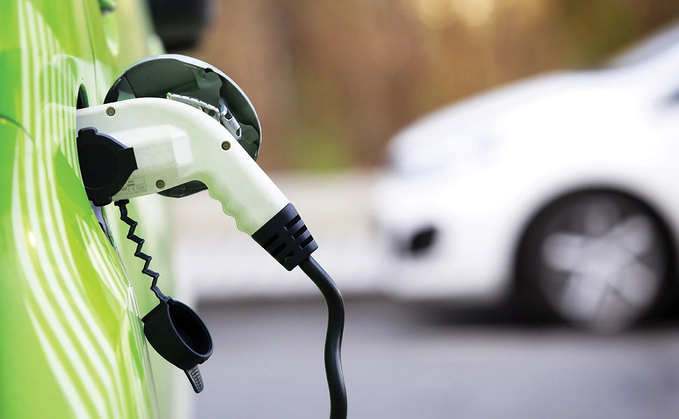The electric vehicle (EV) revolution is gaining momentum, transforming the way we think about transportation. As technology advances and environmental concerns grow, EVs are emerging as a viable and attractive alternative to traditional internal combustion engine vehicles. This blog post explores the future of electric vehicles, examining their benefits, challenges, and the key trends shaping their development.
The Rise of Electric Vehicles
Electric vehicles are no longer a niche market. With increasing consumer demand, supportive government policies, and significant advancements in technology, EVs are rapidly becoming mainstream. Major automakers are investing heavily in electric vehicle production, with some even pledging to phase out gasoline-powered cars entirely in the coming decades.

Environmental Benefits
One of the most compelling reasons to adopt electric vehicles is their environmental impact. EVs produce zero tailpipe emissions, which significantly reduces air pollution and greenhouse gas emissions. This is crucial in the fight against climate change and in improving urban air quality, which has a direct impact on public health.

Economic Advantages
Electric vehicles offer several economic benefits as well. Although the upfront cost of EVs can be higher than traditional vehicles, the long-term savings are substantial. EVs have lower operating costs due to cheaper electricity compared to gasoline and reduced maintenance needs. There are fewer moving parts in an electric drivetrain, which means less wear and tear and fewer repairs.
Challenges Facing Electric Vehicles
Despite their many benefits, electric vehicles face several challenges that must be addressed to ensure their widespread adoption.
Range Anxiety
Range anxiety, or the fear that an electric vehicle will run out of battery before reaching its destination, remains a significant concern for potential EV buyers. However, advancements in battery technology are continuously extending the range of EVs. Many modern electric vehicles can now travel over 200 miles on a single charge, with some high-end models exceeding 300 miles.
Charging Infrastructure
A robust and accessible charging infrastructure is essential for the success of electric vehicles. While the number of public charging stations is increasing, there is still a need for more widespread and faster charging options. Governments and private companies are investing in expanding the charging network, including the development of ultra-fast chargers that can significantly reduce charging times.
Battery Life and Recycling
The lifespan and environmental impact of EV batteries are also important considerations. Research is ongoing to improve battery longevity and efficiency. Additionally, the recycling and repurposing of EV batteries are becoming more feasible, which will help mitigate the environmental impact of battery production and disposal.
Key Trends in Electric Vehicle Development
Several trends are shaping the future of electric vehicles, driving innovation and adoption.
Autonomous Driving
Autonomous driving technology is closely linked with the development of electric vehicles. Many EVs are already equipped with advanced driver-assistance systems (ADAS), and fully autonomous electric vehicles are on the horizon. Autonomous EVs have the potential to improve road safety, reduce traffic congestion, and provide greater mobility for individuals who cannot drive.
Vehicle-to-Grid (V2G) Technology
Vehicle-to-grid (V2G) technology allows electric vehicles to communicate with the power grid, providing a two-way flow of electricity. This means that EVs can not only draw power from the grid but also return excess energy to it. V2G technology can help balance supply and demand, support renewable energy integration, and provide backup power during outages.
Lightweight Materials
The use of lightweight materials in EV manufacturing is another significant trend. Reducing the weight of electric vehicles can enhance their efficiency and extend their range. Advances in materials science, such as the development of high-strength, lightweight composites and aluminum alloys, are making this possible.
Conclusion
The future of electric vehicles is bright, with numerous benefits for the environment, economy, and society as a whole. While challenges remain, ongoing advancements in technology and infrastructure are paving the way for a cleaner, more sustainable transportation system. As electric vehicles become more accessible and practical, their adoption is expected to accelerate, driving us toward a greener future.
FAQs
1. What are the main benefits of electric vehicles?
Electric vehicles offer numerous benefits, including reduced greenhouse gas emissions, lower operating costs, and decreased dependence on fossil fuels. They also require less maintenance due to fewer moving parts and contribute to better air quality.
2. How long does it take to charge an electric vehicle?
Charging times vary depending on the type of charger used. Standard home chargers (Level 1) can take 8-12 hours for a full charge, while Level 2 chargers can do it in 4-6 hours. Fast chargers (Level 3) can charge an EV up to 80% in 30 minutes to an hour.
3. Are electric vehicles more expensive than traditional cars?
The initial purchase price of electric vehicles can be higher than that of traditional cars. However, the total cost of ownership is often lower due to savings on fuel, maintenance, and potential tax incentives.
4. What is range anxiety, and how is it being addressed?
Range anxiety is the fear that an electric vehicle will run out of battery before reaching its destination. It is being addressed through advancements in battery technology, which are extending the range of EVs, and the expansion of the charging infrastructure.
5. What is vehicle-to-grid (V2G) technology?
Vehicle-to-grid (V2G) technology allows electric vehicles to communicate with the power grid, enabling a two-way flow of electricity. This means EVs can draw power from the grid and return excess energy to it, helping balance supply and demand and supporting renewable energy integration.



